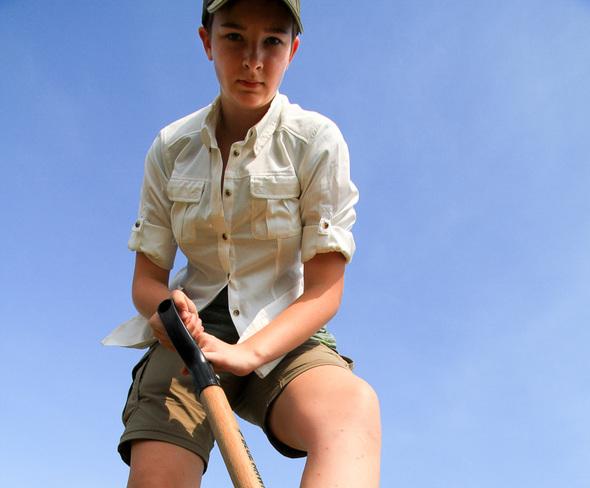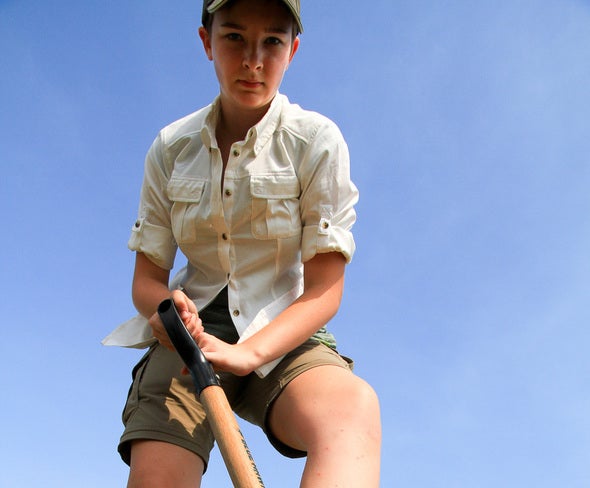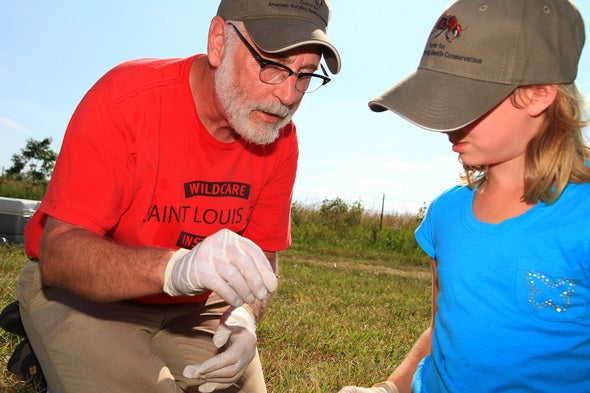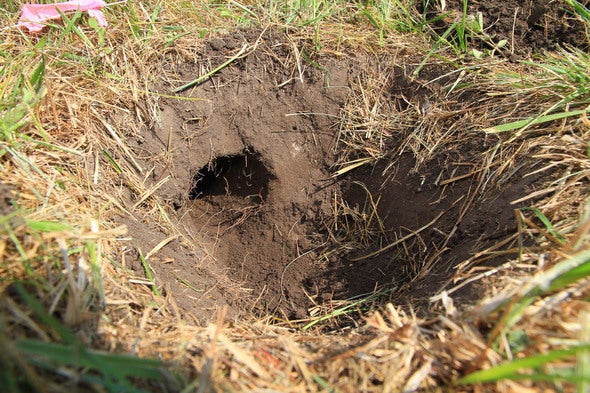
Xplor reconnects kids to nature and helps them find adventure in their own backyard. Free to residents of Missouri.








EL DORADO SPRINGS, Mo.—Is there a reason to care about a bug that spends most of the time underground and eats dead flesh?
Conservation experts nation-wide, and 12 St. Louis area high school students, would say yes.
The American burying beetle (Nicrophorus americanus) is the largest of a class of carrion beetles and used to be found in 35 states, including Missouri. Now federally-endangered, the beetles are struggling to hang on in less than seven states.
Just five years ago, there were none left in Missouri either. That’s when the Missouri Department of Conservation (MDC) entered into a partnership to restore the beetle to the Show-Me-State.
“This summer will mark five consecutive years that MDC, St. Louis Zoo, the U.S. Fish and Wildlife Service (USFWS), and the Nature Conservancy have worked to bring back the American burying beetle by releasing captive-bred beetles onto Wah’Kon-Tah Prairie in southwest Missouri,” said MDC Natural History Biologist Andrea Schuhmann.
The beetles are being bred at the St. Louis Zoo’s Monsanto Insectarium from specimens gathered from Fort Chaffee, Ark. “It’s one of the closest populations we can pull from and more closely related to anything that would have been around here,” said Bob Merz, Director of the Zoo’s Center for American Burying Beetle Conservation.
Wah’Kon-Tah, located near El Dorado Springs, is jointly owned by MDC and the Nature Conservancy, and managed by MDC. It contains 3,000 acres of tallgrass prairie spanning Cedar and St. Clair Counties where the beetles have the potential to thrive. The prairie ecosystem used to cover about a quarter of Missouri. Now less than one percent remains.
The American burying beetle gets its name from the practice of burying dead animals, like small mammals and birds, which it eats. “The strong flying beetles use their highly sensitive antennae to locate carrion, sometimes at great distances,” Schuhmann said. They can tunnel up to a foot underground, where they strip the carrion of fur and feathers using their pincers and secrete an anti-bacterial substance that slows down decomposition. They could be called nature’s embalmers.
According to Merz, removing dead carcasses from the ecosystem is an important job. He also said the beetles help turn and aerate soil, and enrich it by adding organic matter.
The USFWS granted a special designation to allow the zoo to breed the burying beetles and permit the restoration efforts for the past five years on Wah’Kon-Tah.
However, the reintroduction effort on June 22 had special significance to 12 teenagers from St. Louis. They got to help.
The zoo sponsors a program for teens called Zoo ALIVE. It’s a volunteer educator program for high school age students. It gives them a chance to help with the zoo’s education and conservation efforts. Members of Zoo ALIVE have been caring for the beetles at the zoo since April, and 12 of them were chosen to aid in the reintroduction at Wah’Kon-Tah.
The zoo brought approximately 200 beetles for reintroduction. A team made up of MDC, zoo and USFWS staff, and the 12 Zoo ALIVE teens, broke up into to three groups and went to three designated sites on Wah’Kon-Tah.
Each site was chosen because of slight differences in soil composition, vegetation types, drainage and other features. “You never know what Mother Nature’s going to do, so we give them different sites and different options. Diversity of sites gives a better chance for the beetles to survive,” Merz said.
Their objective was to dig a row of specifically-sized and spaced holes in which to plant a mated pair of burying beetles. The procedure called for digging a second hole within the wall of the first one and perpendicular to it. This would become a nesting chamber in which a dead, pen-raised quail would be placed. The beetles would preserve the quail using the “embalming” procedure described earlier.
Laurel Bonebrake of St. Louis was one of the teens digging the holes. A home-schooled student, she’s been with Zoo ALIVE for two years. Bonebrake said she originally considered going into the field of zoo keeping, but now she’s veering toward botany. “Field work is helping me decide to be a botanist. Through this program, research and field work seems to be my preference. And it’s really just a great time,” she said.
Once introduced, the female burying beetle will lay her eggs near the preserved carcass. After the larvae hatch in about four days, both male and female share feeding chores by eating some of the dead flesh and regurgitating into the hungry larval mouths.
After digging her first hole and placing a quail in the nesting chamber, Bonebrake introduced a mated pair of beetles, who went straight for the carcass and disappeared into the chamber.
The once motionless quail began an eerie twitching movement, barely perceptible, as if it were about to experience a fleeting resurgence of life. It was the unseen beetles beginning their work.
Bonebrake took the plug she carefully saved from digging the hole, and replaced it, intact, over the opening.
The larvae will feed for six to 12 days, and then enter the pupal stage of development. 45 to 60 days later the new adults emerge from the nesting cavity to begin their own one-year lifespan. Once all the holes were dug and the beetles introduced, the crew covered the site with chicken coop wire to protect it from predators.
Bonebrake believed her day’s work to be worthwhile.
“I feel as though I’m really helping to contribute to something greater than myself by reintroducing these beetles. The idea that I could be affecting this entire species and helping them is awesome.
‘Like ‘stars exploding’ awesome!”